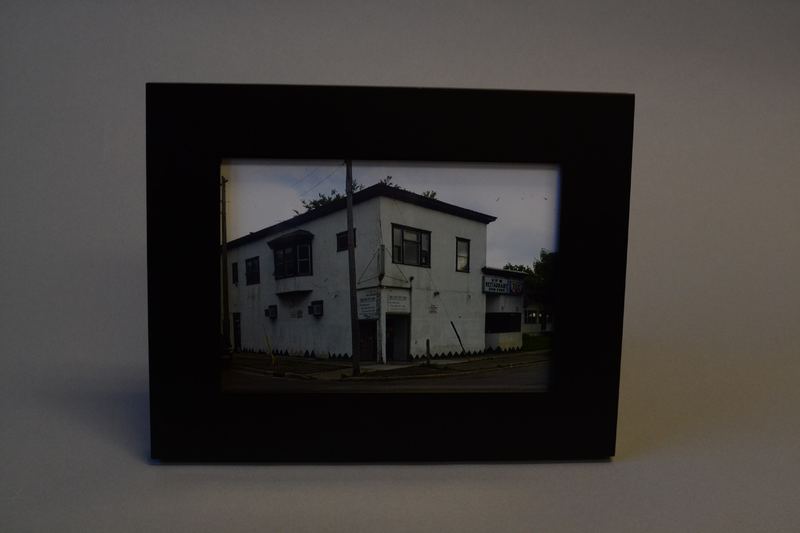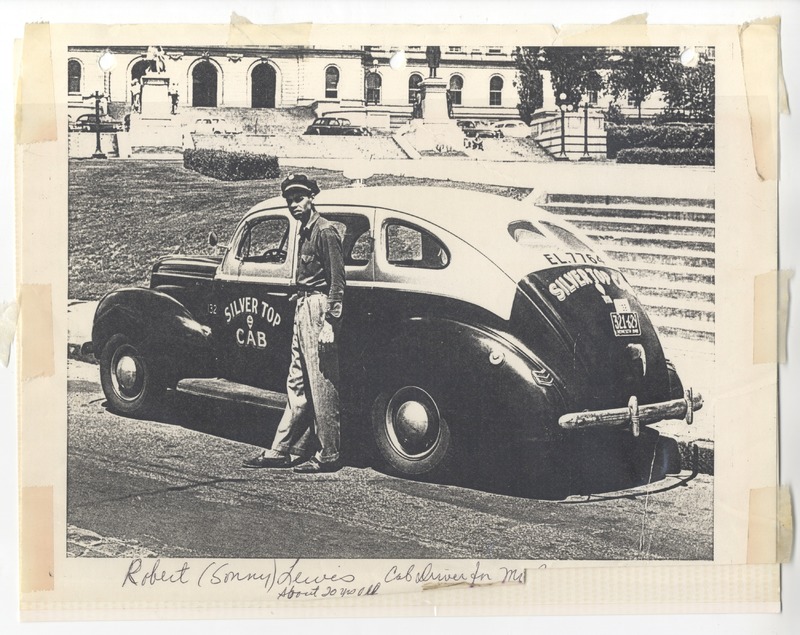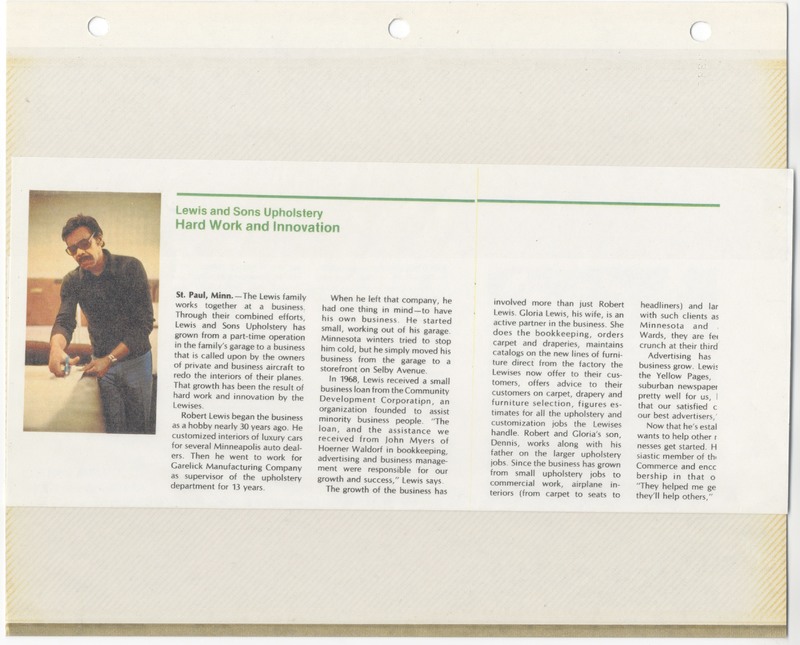Business Ownership in Rondo
Under the larger theme of “Ownership and Occupation”, business ownership is an important aspect of the Rondo community history. Prior to the construction of Interstate-94, Rondo had a vibrant, diversified and successful business district. Rondo Avenue, which was replaced by the interstate, was a major street that housed a large section of businesses in Rondo. The book “Folklore of the Freeway” further solidifies the intent with which governmental institutions decided to place the growing freeway system through communities of color to displace “slums” or regions with less value. In reality, the Rondo neighborhood was far from a “slum”. In fact, Rondo was and still is a strong community with several businesses. “African-Americans in Minnesota” reinforces this notion through highlighting the several leaders, churches, communities and business that existed in Rondo prior to highway construction. Fortunately, movements such as the “Rondo History Harvest” have helped to support the process of resurfacing the rich history of the Rondo community. This section is aimed towards highlighting the prominence of Rondo business and Black owned businesses and disrupt historical negative misrepresentations of the Rondo community.
The first item in this section is a photograph of the McGill Grocery Store in Rondo. The item was brought during the Rondo History Harvest by Thomas Kustermann, the grandson of the original store owner. During its existence it was described as an important social center in the community, people would gather and talk each day as they came to buy items. Mr. Kustermann also describes that after the McGill grocery store closed down, alternative business filled the void, such as a tailor shop and barber shop. The importance of this photograph and a narrative cannot be understated. The McGill grocery store represents what used to be a strong community in Rondo. Neighbors had local spaces where they could socialize and buy goods to meet their needs. In addition, the McGill grocery store reinforces the fact that Rondo community was wrongly devalued and labeled as a “slum”.
The second item and photograph above is a of Sonny Lewis, a cab driver for the first Black owned cab company in Saint Paul. This photo was also brought during the history harvest. Interestingly, the driver would go on to found “Lewis and Son’s Upholstery” which became a prominent Black business in the Rondo Community. This photograph helps to continue building a counter-narrative against historical misrepresentations of Rondo. The community was not just productive, it was thriving as shown by the diversification of industries in which business owners were involved. The presence of a Black owned cab company further supports the fact that Rondo was a place of entrepreneurship and business acumen. In addition, considering the barriers facing communities of color during the early 20th century, the economic success and business ownership by Rondo community members is especially amazing.
The third item is a photograph of a newspaper clipping discussing the success of the “Lewis and Sons Upholstery” business in Rondo. The photo was brought during the Rondo History Harvest and describes the beginnings and ultimate success of Robert Lewis, the founder of the upholstery business. Mr. Lewis started his business out of the back of his garage before moving into a storefront on Selby, another major street in the Rondo community. Originally this business was for the interiors of luxury cars before being expanded to aircraft interiors. The history of the “Lewis and Sons” business is extremely important. Primarily, it highlights the economic successes experienced by Black business owners in the Rondo community. In addition, the article about Mr. Lewis introduces the “Community Development Organization” which gave him the loan he needed to expand the business. In turn, this item not only highlights Black economic success, but it also introduces the organizations that helped Black community members succeed.
The artifacts in this section reflect the notion that Rondo was an active community that supported business and Black business ownership. The Silvertop cab company and “Lewis and Sons Upholstery” businesses are especially notable because they indicate and represent the presence of Black business ownership in Rondo. The range of industries represented in these items indicate that the Rondo business community was well developed beyond entities that provided the basic essentials. The presence of a luxury upholstery company and a cab company point to an economy that was productive. In the context of the larger theme “Ownership and Occupation”, these items fit into both aspects. The range of businesses in this section represent the strength of the Rondo economy. In addition, they reflect the variety of occupations held by Rondo community members such as grocery store workers, cab drivers, and fabric workers. Together, these items corroborate Rondo as the complete opposite of a slum. Instead, Rondo was not only an important community in Saint Paul, but a place where business ownership and Black business was thriving.


